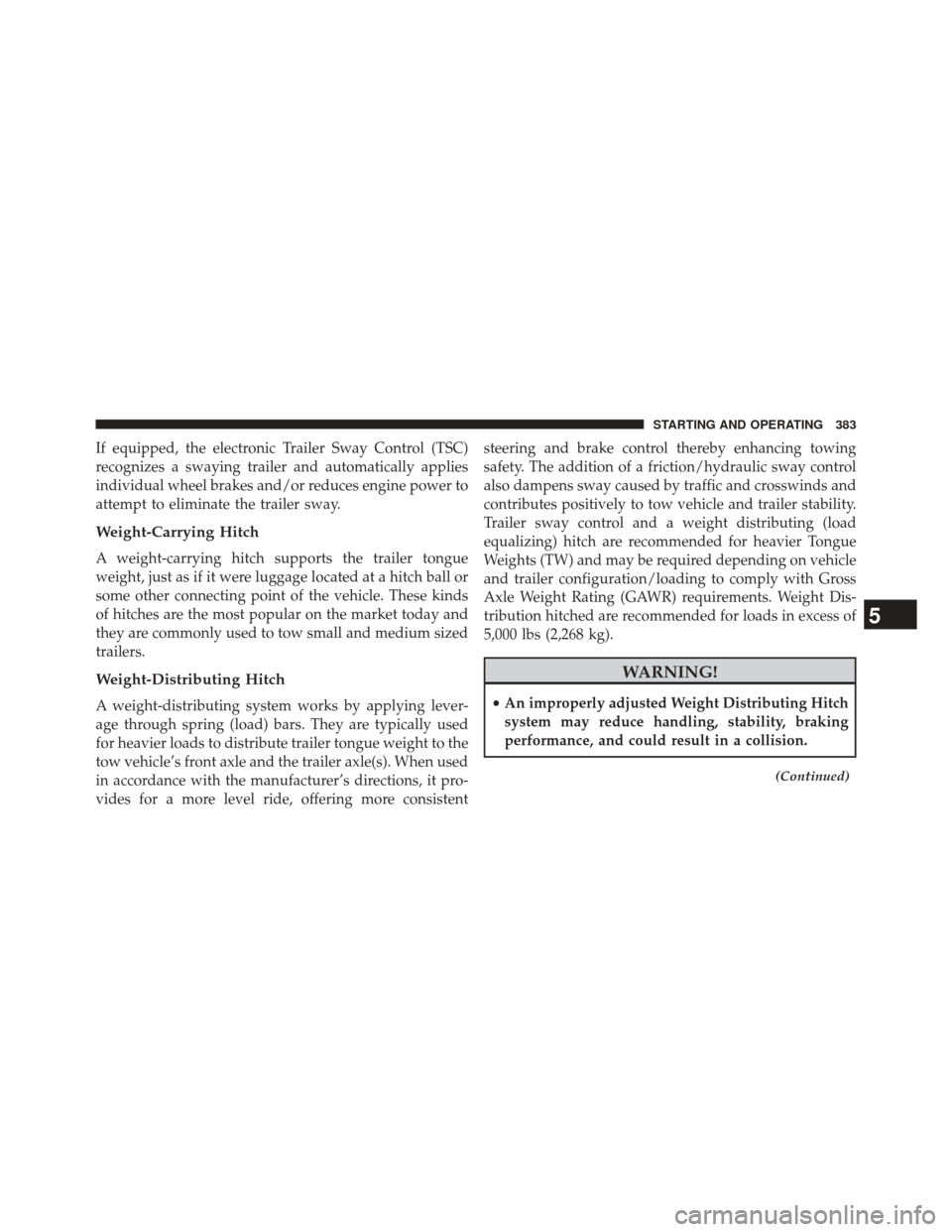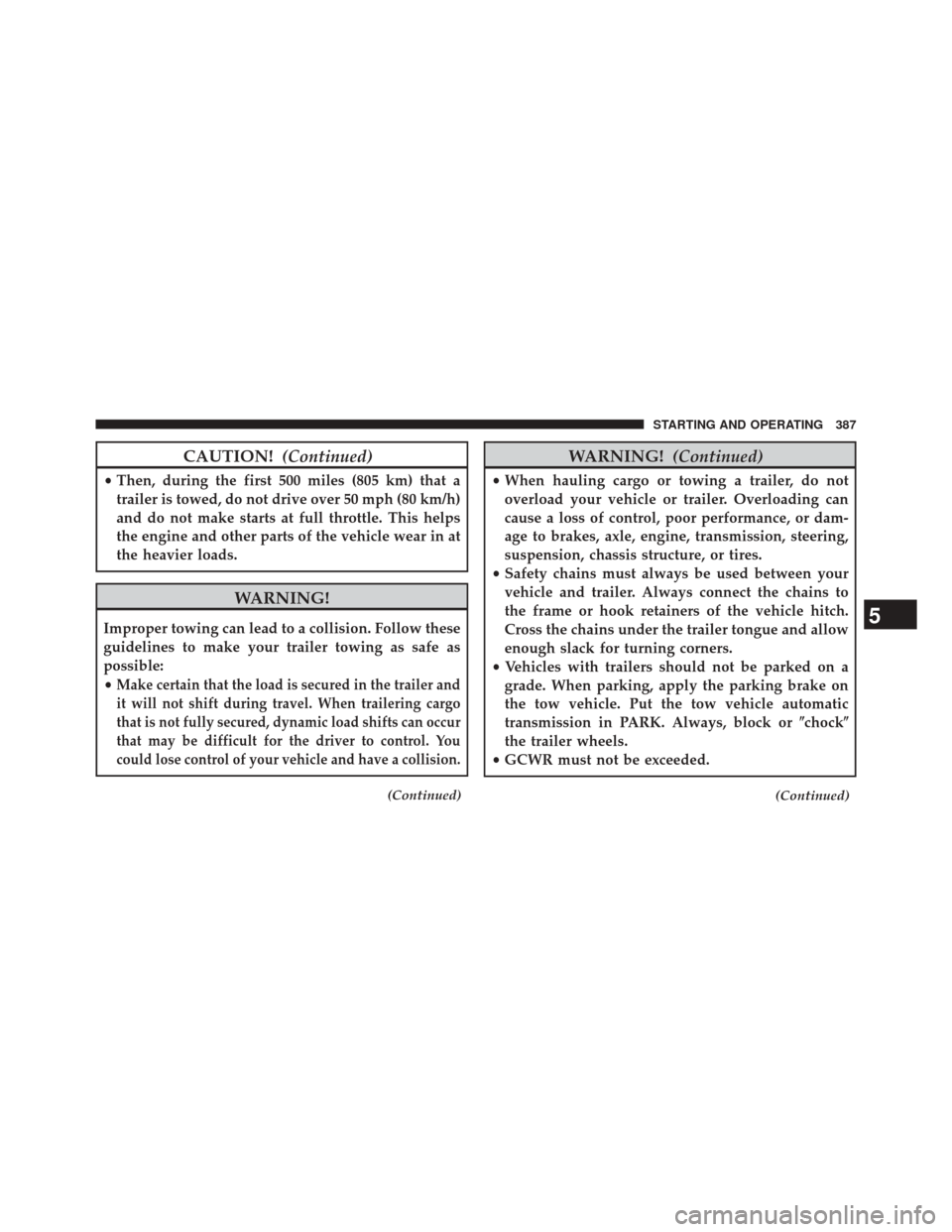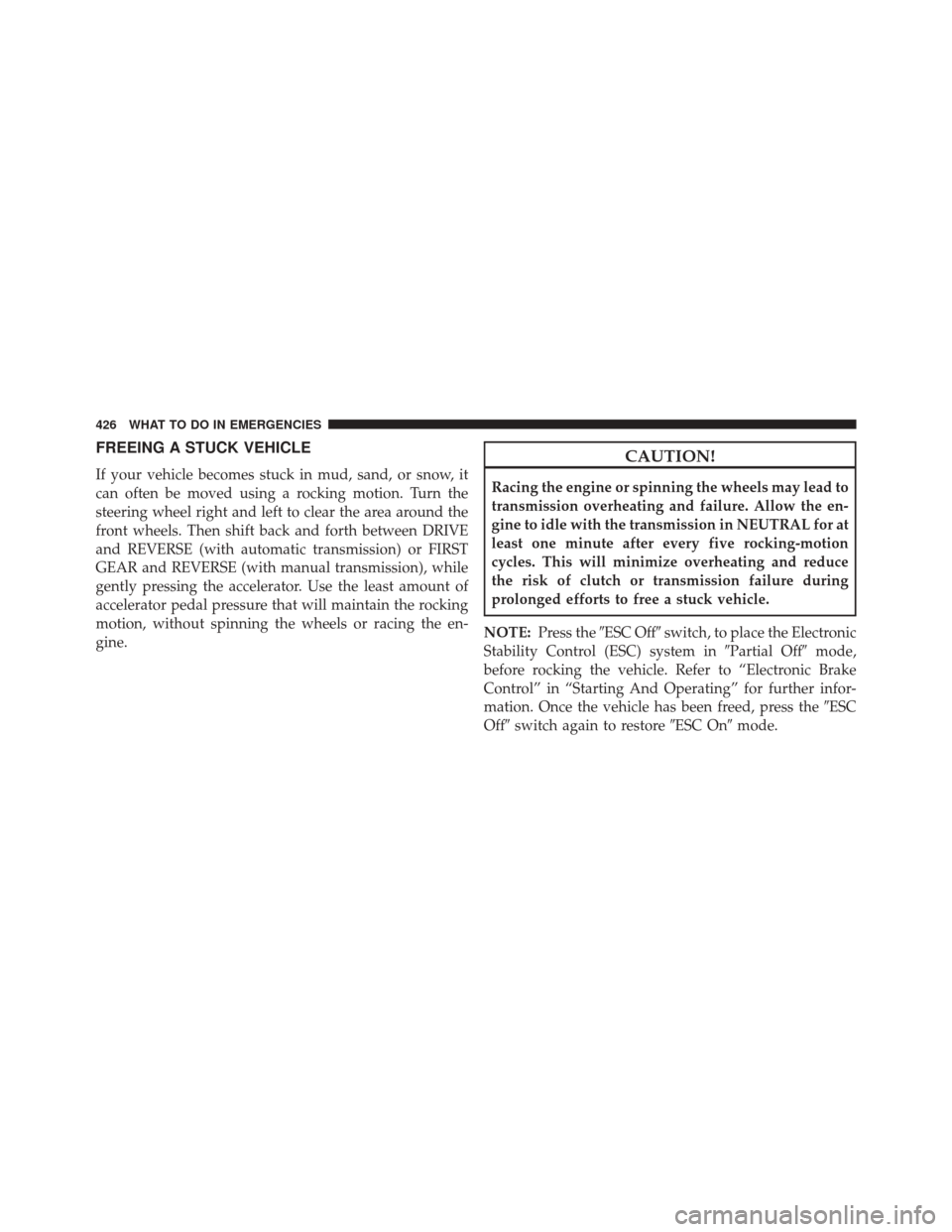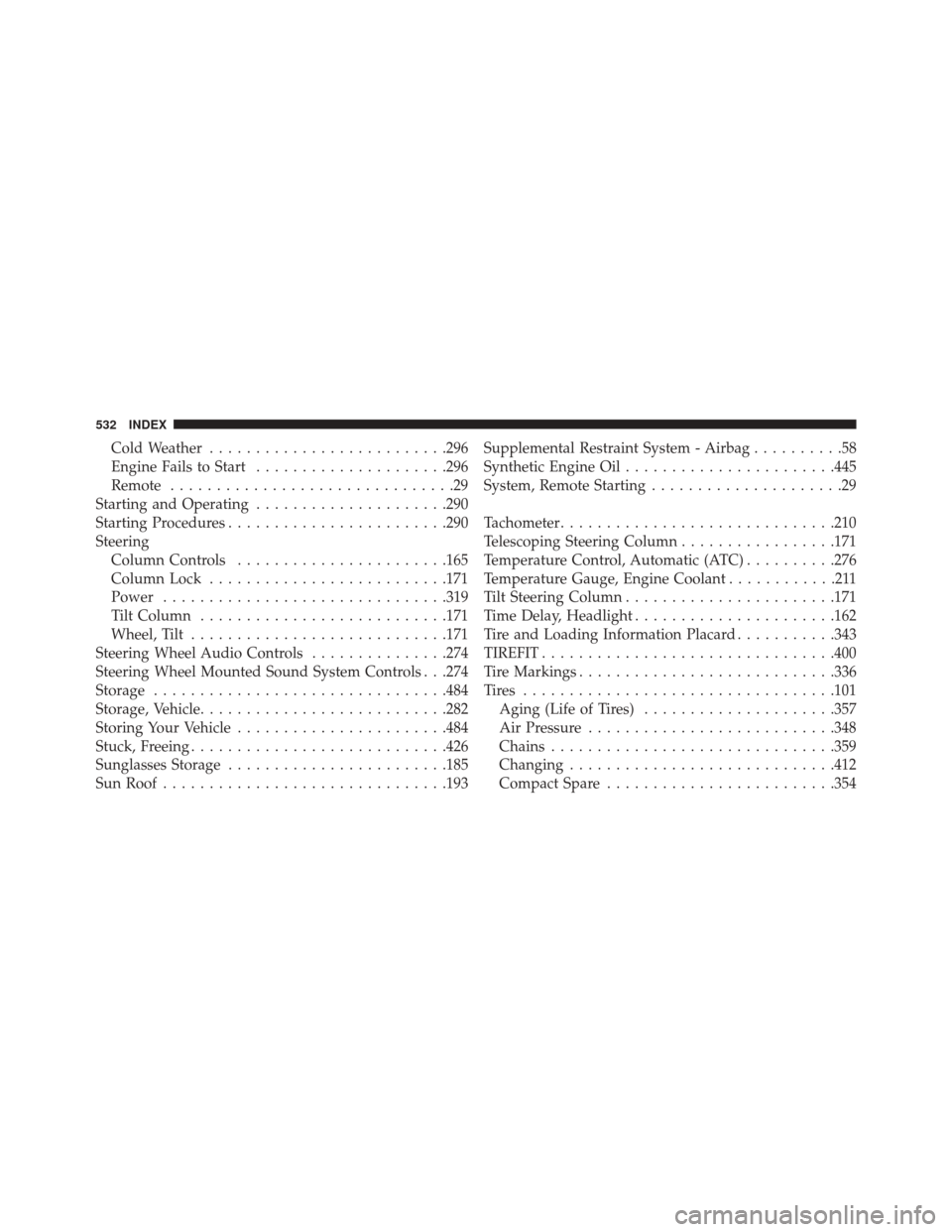Page 385 of 539

If equipped, the electronic Trailer Sway Control (TSC)
recognizes a swaying trailer and automatically applies
individual wheel brakes and/or reduces engine power to
attempt to eliminate the trailer sway.
Weight-Carrying Hitch
A weight-carrying hitch supports the trailer tongue
weight, just as if it were luggage located at a hitch ball or
some other connecting point of the vehicle. These kinds
of hitches are the most popular on the market today and
they are commonly used to tow small and medium sized
trailers.
Weight-Distributing Hitch
A weight-distributing system works by applying lever-
age through spring (load) bars. They are typically used
for heavier loads to distribute trailer tongue weight to the
tow vehicle’s front axle and the trailer axle(s). When used
in accordance with the manufacturer’s directions, it pro-
vides for a more level ride, offering more consistentsteering and brake control thereby enhancing towing
safety. The addition of a friction/hydraulic sway control
also dampens sway caused by traffic and crosswinds and
contributes positively to tow vehicle and trailer stability.
Trailer sway control and a weight distributing (load
equalizing) hitch are recommended for heavier Tongue
Weights (TW) and may be required depending on vehicle
and trailer configuration/loading to comply with Gross
Axle Weight Rating (GAWR) requirements. Weight Dis-
tribution hitched are recommended for loads in excess of
5,000 lbs (2,268 kg).
WARNING!
•
An improperly adjusted Weight Distributing Hitch
system may reduce handling, stability, braking
performance, and could result in a collision.
(Continued)
5
STARTING AND OPERATING 383
Page 389 of 539

CAUTION!(Continued)
•Then, during the first 500 miles (805 km) that a
trailer is towed, do not drive over 50 mph (80 km/h)
and do not make starts at full throttle. This helps
the engine and other parts of the vehicle wear in at
the heavier loads.
WARNING!
Improper towing can lead to a collision. Follow these
guidelines to make your trailer towing as safe as
possible:
•
Make certain that the load is secured in the trailer and
it will not shift during travel. When trailering cargo
that is not fully secured, dynamic load shifts can occur
that may be difficult for the driver to control. You
could lose control of your vehicle and have a collision.
(Continued)
WARNING! (Continued)
•When hauling cargo or towing a trailer, do not
overload your vehicle or trailer. Overloading can
cause a loss of control, poor performance, or dam-
age to brakes, axle, engine, transmission, steering,
suspension, chassis structure, or tires.
• Safety chains must always be used between your
vehicle and trailer. Always connect the chains to
the frame or hook retainers of the vehicle hitch.
Cross the chains under the trailer tongue and allow
enough slack for turning corners.
• Vehicles with trailers should not be parked on a
grade. When parking, apply the parking brake on
the tow vehicle. Put the tow vehicle automatic
transmission in PARK. Always, block or �chock�
the trailer wheels.
• GCWR must not be exceeded.
(Continued)
5
STARTING AND OPERATING 387
Page 428 of 539

FREEING A STUCK VEHICLE
If your vehicle becomes stuck in mud, sand, or snow, it
can often be moved using a rocking motion. Turn the
steering wheel right and left to clear the area around the
front wheels. Then shift back and forth between DRIVE
and REVERSE (with automatic transmission) or FIRST
GEAR and REVERSE (with manual transmission), while
gently pressing the accelerator. Use the least amount of
accelerator pedal pressure that will maintain the rocking
motion, without spinning the wheels or racing the en-
gine.
CAUTION!
Racing the engine or spinning the wheels may lead to
transmission overheating and failure. Allow the en-
gine to idle with the transmission in NEUTRAL for at
least one minute after every five rocking-motion
cycles. This will minimize overheating and reduce
the risk of clutch or transmission failure during
prolonged efforts to free a stuck vehicle.
NOTE: Press the �ESC Off� switch, to place the Electronic
Stability Control (ESC) system in �Partial Off�mode,
before rocking the vehicle. Refer to “Electronic Brake
Control” in “Starting And Operating” for further infor-
mation. Once the vehicle has been freed, press the �ESC
Off� switch again to restore �ESC On�mode.
426 WHAT TO DO IN EMERGENCIES
Page 534 of 539

Cold Weather......................... .296
Engine Fails to Start .....................296
Remote ...............................29
Starting and Operating .....................290
Starting Procedures ....................... .290
Steering Column Controls ...................... .165
Column Lock ......................... .171
Power .............................. .319
Tilt Column .......................... .171
Wheel, Tilt ........................... .171
Steering Wheel Audio Controls ...............274
Steering Wheel Mounted Sound System Controls . . .274
Storage ............................... .484
Storage, Vehicle .......................... .282
Storing Your Vehicle ...................... .484
Stuck, Freeing ........................... .426
Sunglasses Storage ....................... .185
Sun Roof .............................. .193Supplemental Restraint System - Airbag
..........58
Synthetic Engine Oil ...................... .445
System, Remote Starting .....................29
Tachometer ............................. .210
Telescoping Steering Column .................171
Temperature Control, Automatic (ATC) ..........276
Temperature Gauge, Engine Coolant ............211
Tilt Steering Column ...................... .171
Time Delay, Headlight ..................... .162
Tire and Loading Information Placard ...........343
TIREFIT ............................... .400
Tire Markings ........................... .336
Tires ................................. .101
Aging (Life of Tires) .....................357
Air Pressure .......................... .348
Chains .............................. .359
Changing ............................ .412
Compact Spare ........................ .354
532 INDEX